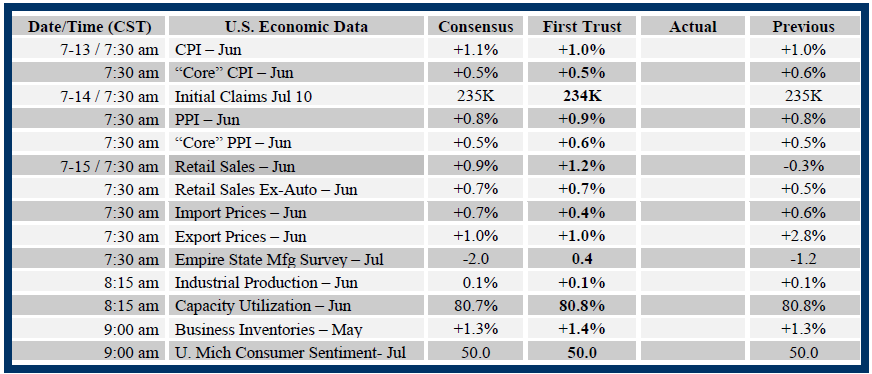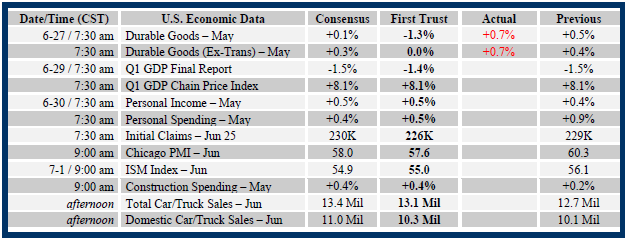First Trust Monday Morning Outlook
Brian S. Wesbury - Chief Economist
September 19, 2022
We know many people think we are beating a dead horse, but this horse is far from dead. Instead, she’s in the middle of one of the most important races of her life. What we have been talking about – and will keep talking about until we think Americans understand it – is monetary policy and the Federal Reserve.
Ludwig von Mises once said that the value of money is at least as important to a society as its Constitution. The value of money should be sacrosanct, and Government, if that’s who’s in charge of it, has a responsibility to keep it stable. Fourteen years ago the Federal Reserve completely changed the way it manages the value of our money when it shifted monetary policy from a “scarce reserve” model to an “abundant reserve” model, and we believe there is a direct connection between these actions, and the dramatic decline in the value of our money the likes of which we haven’t seen in 40 years. Inflation undermines work, living standards, investments and is a nightmare for future planning. The Fed has failed.
In a scarce reserve model, the Fed can add or subtract reserves from the banking system and through this mechanism push the federal funds rate (FFR) up or down. Banks compete for these reserves and, through a market of bids and asks, set an interest rate for reserves. In an abundant reserve model, there are so many excess reserves that banks don’t need to compete for them. The FFR is essentially zero because only in very special situations do banks need to borrow reserves. So the Fed created an interest rate that it pays on excess reserves (the IOER), which acts as a floor for interest rates, and that rate is whatever the Fed decides it is.
In other words, while under the old system the market was involved in setting interest rates, today, the Fed now artificially sets interest rates. And as you might deduce, if the government sets interest rates, they likely set them lower than they would be if markets decided what interest rate was correct.
The Fed declares success when market rates move with its rates. But this is a test with a determined outcome. If the Fed grew five trillion bushels of corn, and corn was so plentiful that the price per bushel was essentially zero, then no private farm could sell corn for more. If the Fed then raised the price of its corn to $1/bushel, farmers could then sell theirs for 99 cents/bushel, but it’d be a completely manipulated market.
So, while raising interest rates may reduce economic growth and may throw the US into recession, there is no guarantee that this will fix inflation. Interest rates don’t determine inflation; the amount of money circulating in the economy determines inflation. And this is where the problem lies.
The Fed’s balance sheet held $850 billion in reserves at the end of 2007. Today, it is close to $9 trillion. Most of these deposits at the Fed are bank reserves which the Fed created by buying Treasury bonds, much of which was money the Treasury itself handed out during the pandemic. At this point, if we add excess reserves to reverse repos, there are over $5 trillion in excess money in the system.
Technically, banks can do whatever they want with these reserves as long as they meet the capital and liquidity ratio requirements set by regulators. They can hold them at the Fed and get the interest rate the Fed sets, or they can lend them out at current market interest rates. In turn, the big question is whether the Fed can pay banks enough to stop them from lending in the private marketplace and multiplying the money supply.
But we’ve never done this before. We’ve never tried to stop bank lending in an inflationary environment by just raising the IOER. What interest rate is enough? And when will politicians go bonkers over how much the Fed is paying the banks? After all, if we combine how much the Fed pays private (foreign and domestic) entities on both excess reserves and reverse repos, at a 3% rate it will be $150 billion per year.
If the Fed raises rates to 4% under this new method of managing monetary policy, it will pay private entities $200 billion per year! Wait until politicians who love to hate banks find this out! Moreover, the Fed is now losing money on much of its bond portfolio because it bought so many bonds at low interest rates. At some point the Fed will be paying out more in interest than it is earning on its securities.
Jerome Powell was recently asked if he would ever go back to a scarce reserve model. He said no way. He argued that because of recent crises (2008 financial crisis and the Pandemic) this new abundant reserve model is better. To be brief, government always uses crisis to grow and we would have never had the inflation we have today under the old model.
Like the rest of the government, the Fed has become way too big. Too many resources, and too much power in the hands of so few is antithetical to free markets. To say we are worried about this is an understatement. We just wish more people understood it and called the Fed to task. The Fed should return to a scarce reserve model as soon as possible. We feel like Don Quixote, but we won’t stop dreaming.
The attached information was developed by First Trust, an independent third party. The opinions are of the listed authors at First Trust Advisors L.P, and are independent from and not necessarily those of RJFS or Raymond James. All investments are subject to risk. There is no guarantee that these statements, opinions, or forecasts provided in the attached article will prove to be correct. Individual investor's results will vary. Past performance does not guarantee future results. Forward looking data is subject to change at any time and there is no assurance that projections will be realized. Any information provided is for informational purposes only and does not constitute a recommendation. Investing involves risk and you may incur a profit or loss regardless of strategy selected.




















